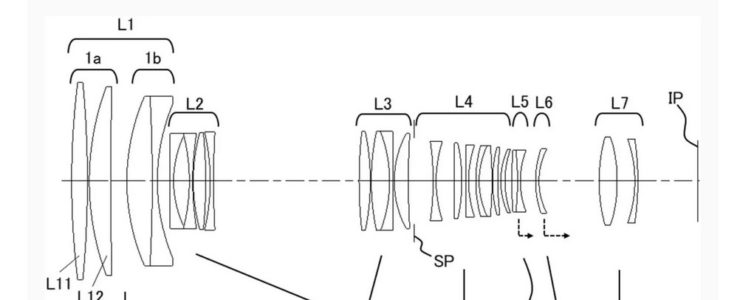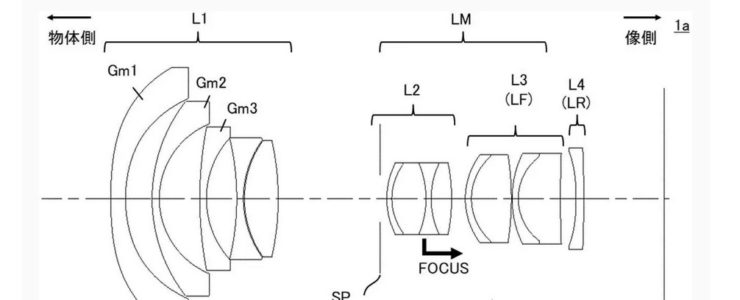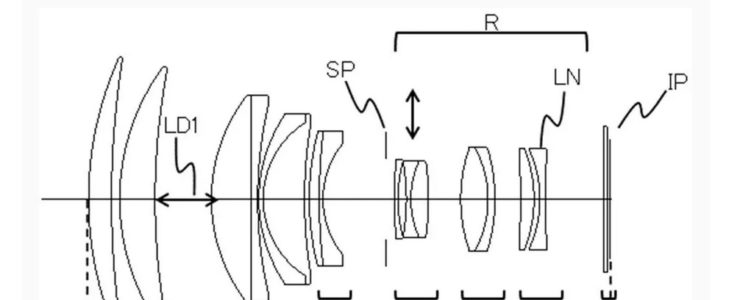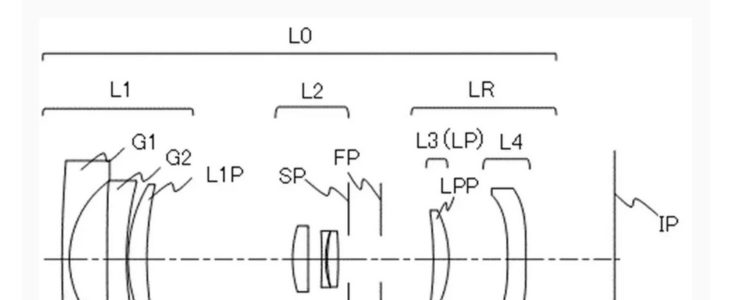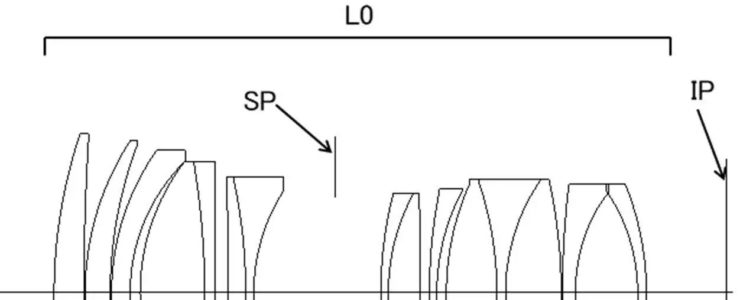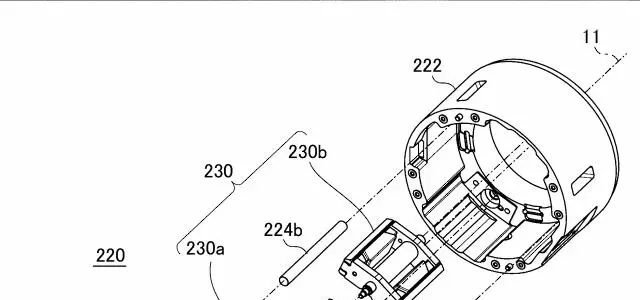Canon Patent: RF 100-300mm f/2.8L IS USM Lens
A new Canon patent application was spotted.
Canon patent application 2023099388 (Japan, published 7/13/2023) discusses optical formulas for what appears to be an RF 100-300mm f/2.8L IS USM lens for the EOS R camera system. From the patent literature:
Title of Invention
A zoom lens, an imaging device having the same, and an imaging system.
An object of the present invention is to provide a lightweight zoom lens that has high optical performance over the entire zoom range, and an imaging device and an imaging system having the zoom lens.
Description of the Related Art
In recent years, zoom lenses used in imaging apparatuses are required to have high optical performance over the entire zoom range and to be lightweight. In order to meet these requirements, the zoom lens has a first lens group with positive refractive power, a second lens group with negative refractive power, and a subsequent group including a plurality of lens groups, arranged in order from the object side to the image side. Lenses have been proposed (see Patent Documents 1 and 2).
A large-aperture telephoto zoom lens having a long focal length and a small F-number tends to have a large lens diameter, which tends to cause an increase in weight. In order to reduce the weight of the zoom lens, it is effective to increase the positive refractive power of the first lens group and reduce the lens diameters of the lens groups included in the subsequent group. However, if the refractive power of the first lens group is made too strong, it becomes difficult to correct spherical aberration, axial chromatic aberration, and lateral chromatic aberration, especially at the telephoto end.
SUMMARY OF THE INVENTION
It is an object of the present invention to provide a lightweight zoom lens that has high optical performance over the entire zoom range, and an imaging apparatus and imaging system having the zoom lens. Focusing is performed by moving the fifth lens unit L5 and the sixth lens unit L6 along different trajectories . Specifically, the fifth lens unit L5 and the sixth lens unit L6 move toward the image side when focusing from an infinite object to a close object.
Example 1
- Focal length: 103.00-292.00
- F-value: 2.90
- Half angle of view: 11.86-4.24
- Image height: 21.64
- Total length: 333.61
- Back focus: 31.93
More Canon patent applications are listed here. Some particularly interesting patent applications we think might get into production are these:
- RF 16-28mm lens with either f/2.8, f/2.8-4, or f/4
- Automatic shutter silencing based on subject and distance
- A bunch of prime lenses for the RF mount
- An improved Electronic Viewfinder
- Patent application for RF 50mm F1.4 and an RF 35mm f/1.4 lenses
- A zoom lens that might be for an EOS R with APS-C sensor
- A smaller IBIS unit.
- A cooling adapter for the RF mount (R5 overheating?)
- A bunch of macro lenses for the RF mount.
- A 8mm f/4 circular fisheye lens for the Canon EOS R system
- A battery grip that works with differently siszed cameras
- A 100-400mm f/5.5-7.1 lens for APS-C cameras. EOS M or DSLR?
- RF 17-70mm lens for EOS R system
- IBIS coming to the EOS M and PowerShot lineup?
- Patent Application: mirrorless camera with large display and virtual control wheel
- Patent Application: IBIS and Lens IS Working Together
- Patent application for high speed mirror movement and control
- Patent application for an RF 14-28mm f/2 lens
- Patent application for an RF 50mm f/1.8 lens
- Patent application for a smart lens cap
- Patent application for celestial auto-focus
- Patent application describing a Pop-Up Flash With LED
- Patent application describing the optical formula for a RF 70-300mm F/4-5.6 IS lens for EOS R systems
- Patent application describing how to improve burst rate by compressing raw files
- Patent application describing a new way to review photos from a sequential shot
- Patent application that describes technology to improve wireless communication while reducing power consumption
- Patent application to spot and reduce moire artefacts in image data
- Patent application for weather sealed lens adapter
- Patent application for AI powered predictive camera control system
- Patent application for 18-55mm kit lens with LCD display
- Patent application to reduce noise in image files
[via asobinet]

